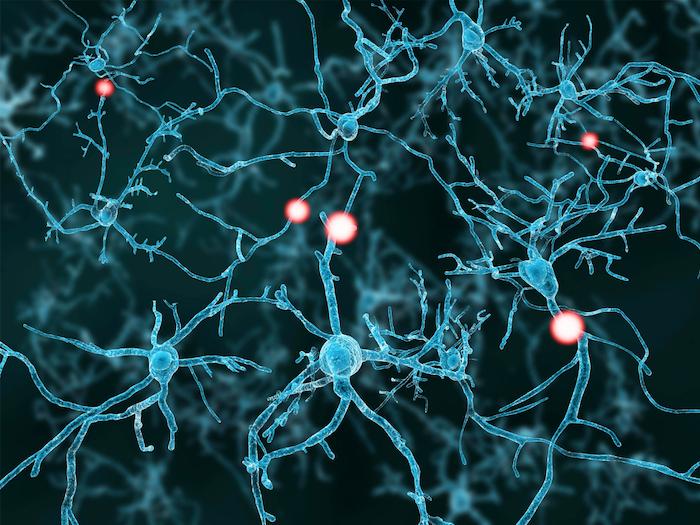Phosphor-Free White LEDs Emit Vibrant Yellow-Green Light
In the relentless quest to enhance artificial lighting, a breakthrough study has emerged from the laboratories of optical science, promising to reshape our understanding of white light-emitting diode (LED) technology. The research delves deep into the visual and non-visual effects elicited by phosphor-free white LED lamps, particularly those emitting a spectrum rich in the 535–589-nm […]


In the relentless quest to enhance artificial lighting, a breakthrough study has emerged from the laboratories of optical science, promising to reshape our understanding of white light-emitting diode (LED) technology. The research delves deep into the visual and non-visual effects elicited by phosphor-free white LED lamps, particularly those emitting a spectrum rich in the 535–589-nm range of yellow-green light. This wavelength band, long overlooked in conventional lighting design, has now been identified as a crucial factor influencing both human vision and physiological responses.
Traditional white LEDs typically rely on phosphor materials to convert blue or ultraviolet light into broader visible spectra. Although effective in generating white light, phosphor-based LEDs often suffer limitations including spectral inefficiencies and undesirable heat generation. The study under discussion explores an innovative approach that forgoes phosphors entirely, instead engineering LED chips capable of directly producing white light enriched with specific yellow-green wavelengths. This not only enhances energy efficiency but opens new avenues for tailoring lighting to human biological rhythms.
At the core of the research is the intricate balance between visual perception and non-visual photobiological effects. While the human eye primarily depends on cone cells sensitive to various wavelengths for color perception, non-visual pathways—mediated by intrinsically photosensitive retinal ganglion cells (ipRGCs)—are instrumental in regulating circadian rhythms, alertness, and hormone secretion. The 535–589-nm yellow-green light emerges as a critical player, straddling both visual clarity and non-visual influence, making it an optimized target for advanced lighting systems.
.adsslot_UQjbWsK89H{ width:728px !important; height:90px !important; }
@media (max-width:1199px) { .adsslot_UQjbWsK89H{ width:468px !important; height:60px !important; } }
@media (max-width:767px) { .adsslot_UQjbWsK89H{ width:320px !important; height:50px !important; } }
ADVERTISEMENT
This investigation utilized a series of meticulously calibrated LED prototypes, deliberately excluding phosphor components to isolate the impact of yellow-green emission bands. By employing state-of-the-art semiconductor materials and nanofabrication techniques, the researchers achieved unprecedented spectral purity and stability. These lamps exhibited a highly tunable emission profile, allowing fine adjustments in intensity and wavelength distribution within the yellow-green domain, tailored to experimental requirements.
Human trials conducted under controlled laboratory conditions revealed profound differences in subjective and objective responses to the phosphor-free LED lighting. Participants reported enhanced visual comfort, reduced glare, and improved color discrimination, especially in settings simulating natural daylight indoors. Electroencephalogram (EEG) analyses further revealed heightened cognitive alertness coinciding with exposure to the enriched yellow-green spectrum, underscoring the non-visual stimulatory effects.
Moreover, the phosphor-free lamps demonstrated superior longevity and thermal management characteristics. By eliminating phosphor-related heat dissipation, the LEDs maintained stable output power and color temperature over extended durations. This advancement holds significant implications for sustainable lighting design, reducing maintenance costs and environmental impact while delivering superior experiential quality.
Intriguingly, the study sheds light on how yellow-green light modulates melatonin suppression and cortisol secretion rhythms, vital markers of circadian health. Exposure to these wavelengths in the evening hours influenced hormonal patterns less disruptively compared to conventional white LEDs, indicating potential for circadian-friendly lighting solutions. This insight paves the way for ambient lighting systems which support human health and productivity, especially in urban and shift-work environments.
The spectral composition was also optimized to reduce blue light hazard. Blue light is known for causing retinal stress and contributing to digital eye strain; hence, by enriching the yellow-green component and minimizing excessive blue emissions, the phosphor-free LEDs offer a safer visual environment. This balance addresses growing concerns about the long-term effects of artificial lighting on ocular health.
From a technological standpoint, the development invokes novel semiconductor compounds and heterostructures that facilitate direct emission across the desired spectrum without the need for secondary phosphor conversion layers. This reduces complexity in device architecture and enhances overall luminous efficacy, setting new benchmarks for LED innovation. The modular nature of this technology offers promising scalability for various applications ranging from residential to industrial lighting.
Additionally, the investigation delved into the psychological and emotional impacts of yellow-green light exposure. The enriched lighting environment was associated with improved mood regulation, increased sense of wellbeing, and reduced symptoms of Seasonal Affective Disorder (SAD) during winter simulation. Such findings highlight the untapped potential of spectral engineering in addressing mental health through environmental design.
The energy consumption profiles of these phosphor-free LED lamps also demonstrated marked improvements. By concentrating emission in the biologically relevant yellow-green window, unnecessary electromagnetic energy wastage was minimized. This targeted approach aligns with global sustainability goals by reducing power demands and carbon footprints tied to lighting infrastructure.
Beyond human-centric applications, the yellow-green LEDs exhibited promising effects on plant growth cycles and animal behavioral responses, hinting at broader ecological applications. Although ancillary to the central focus, these observations invite future interdisciplinary research endeavors bridging photonics, biology, and environmental science.
As the lighting industry evolves, integrating such spectrally rich, phosphor-free technologies can redefine standards for smart buildings and personalized lighting systems. Real-time spectral tuning aligned with human circadian phases could transform workspaces, schools, and healthcare facilities, enhancing efficiency and comfort through scientifically grounded illumination strategies.
In conclusion, this pioneering study elucidates the multifaceted advantages of phosphor-free white LED lamps rich in the 535–589-nm yellow-green light spectrum. Merging technical finesse with biological considerations, the research propels lighting design towards a future that prioritizes human health and ecological sustainability without compromising visual performance. The implications resonate across scientific, commercial, and societal domains, signaling a new era in artificial illumination.
Subject of Research:
Visual and non-visual effects of phosphor-free white LED lamps enriched in the 535–589-nm yellow-green light spectrum.
Article Title:
Visual and non-visual effects of the phosphor-free white LED lamps rich in the 535–589-nm yellow-green light
Article References:
Zeng, S., Guo, Y., Hao, W. et al. Visual and non-visual effects of the phosphor-free white LED lamps rich in the 535–589-nm yellow-green light. Light Sci Appl 14, 219 (2025). https://doi.org/10.1038/s41377-025-01896-w
Image Credits: AI Generated
DOI: https://doi.org/10.1038/s41377-025-01896-w
Tags: advancements in LED energy efficiencydirect white light production in LEDsenhancing artificial lighting with new technologiesimpact of yellow-green wavelengths on human visionimplications for human biological rhythmsinnovative lighting design without phosphorsoptical science breakthroughs in lightingphosphor-free white LED technologyphysiological responses to lightingspectral inefficiencies in traditional LEDsvisual and non-visual effects of LED lightingyellow-green light spectrum in lighting
What's Your Reaction?

































